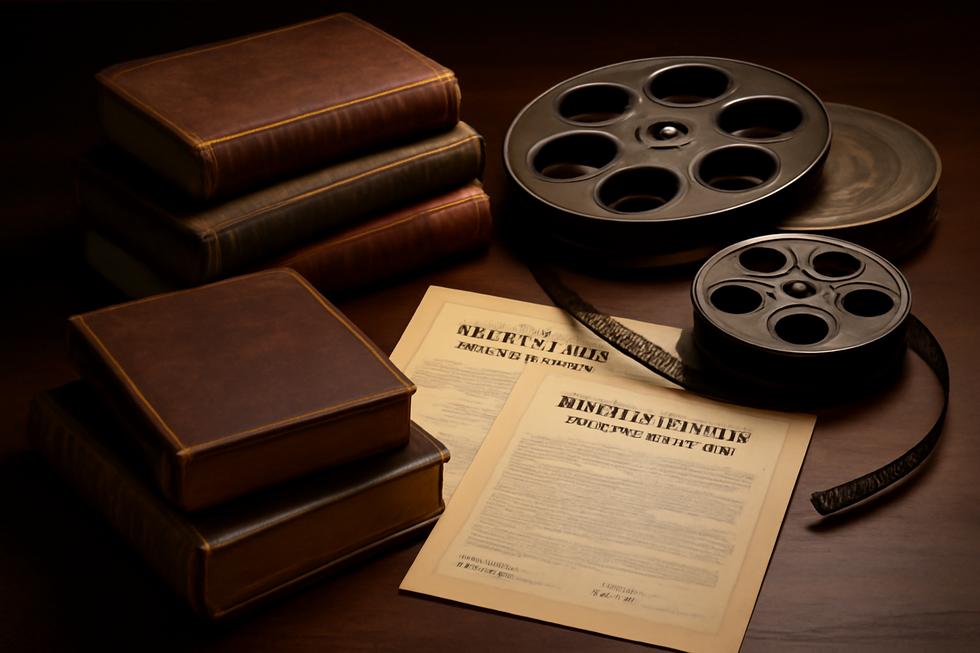Introduction
Copyright law’s evolution plays a critical role in defining how businesses can use and protect creative works. For business owners, understanding the nuances of copyright before 1978 is vital to confidently using historical content and safeguarding proprietary innovations. This article breaks down the fundamental copyright periods prior to 1978, emphasizing how public domain status, renewal requirements, copyright notice obligations, and federal protection of unpublished works impact business decisions. Each chapter builds on this rich history: from the broad public domain status of works before 1930, the crucial role of renewal between 1930 and 1963, legal notice mandates before 1978, to the implications of the Copyright Term Extension Act and resources available for thorough research. Together these insights help businesses navigate copyright confidently and strategically.
Tables of Contents
Chapter 1: Copyright Before the Year 1930: Public Domain Status and Usage
- Navigating the Legal Landscape of Pre-1930 Public Domain Works and Their Usage Rights
- Navigating the Early 20th Century: How Technology, Economy, and Geopolitics Shaped Pre-1930 Public Domain Works
Chapter 2: Copyright Before the Year 1964: The Impact of Renewal Requirements
- How Mandatory Renewal Shaped Copyright Duration and Public Domain Status Prior to 1964
- Unlocking the Past: Navigating Renewal Records to Confirm Copyright Status of Pre-1964 Works
Chapter 3: Copyright Before the Year 1978: Notice and Registration Obligations
- The Crucial Role of Copyright Notice in Securing Protection Before 1978
- The Crucial Role of Registration and Renewal in Pre-1978 Copyright Protection
Chapter 4: Copyright Before the Year 1929: Entry into Public Domain under the Copyright Term Extension Act
- The Evolution of Copyright Law Before 1929 and Its Lasting Influence on Public Domain Status
- How Economic Incentives, Technological Limits, and Society Shaped Copyright for Works Before 1929
Chapter 5: Copyright Before the Year 1978: Federal Protection for Unpublished Works
- Unpublished Works Before 1978: The Transition from Absence to Federal Copyright Coverage
- From Common Law to Federal Protection: The 1976 Copyright Act’s Impact on Unpublished Works
Chapter 6: Copyright Before the Year: Resources for Research on Historical Copyright Status
- Key Archival Sources and Databases for Researching Historical Copyright Status Before 1978
- Understanding Pre-1978 Copyright Laws and Specialized Rules for Historical Works
Chapter 1: Copyright Before the Year 1930: Public Domain Status and Usage

1. Navigating the Legal Landscape of Pre-1930 Public Domain Works and Their Usage Rights
Works published in the United States before January 1, 1930, broadly fall into the public domain, a status that allows unrestricted use without requesting permission or paying fees. This outcome emerges from historical copyright statutes, which initially granted a 28-year term from the date of publication. If the copyright holder renewed protection in the 28th year, the term extended up to 95 years in total. However, for these early works, by 2025, even the longest protected terms have expired, confirming their public domain status.
While this framework clarifies the general availability of pre-1930 works, nuances remain, particularly concerning special categories. For example, sound recordings fixed before February 15, 1972, are subject to different rules established by the Music Modernization Act. Those recordings published before 1925 entered the public domain alongside earlier published works on January 1, 2025, but others may still be protected under varied state laws. Additionally, derivative works that reproduce or adapt public domain materials—such as new editions, arrangements, or artistic reproductions—could hold separate copyrights if they meet originality requirements. Therefore, users should carefully verify whether such derivatives carry their own protections.
In practical terms, the public domain status of works published before 1930 grants the freedom to reproduce, distribute, modify, display, or perform these works without legal barriers in the U.S. This extensive freedom supports cultural, educational, and creative projects that rely on historical texts, images, and media. Nonetheless, caution regarding associated rights in derivatives or sound recordings is advised to avoid inadvertent infringement.
For those exploring the copyright status of specific works, official resources like the U.S. Copyright Office offer detailed guidance on renewal records and registration requirements, especially for works published close to 1930. One helpful public resource is the U.S. Copyright Office’s guide on public domain and copyright durations, which aids in clarifying individual work statuses. Understanding this legal framework ensures confident, lawful use of historical materials now freely available under U.S. copyright law.
2. Navigating the Early 20th Century: How Technology, Economy, and Geopolitics Shaped Pre-1930 Public Domain Works
Before 1930, the landscape of copyright was deeply influenced by the technological, economic, and geopolitical realities of the era, all of which affected how works entered the U.S. public domain and how they could be utilized. Technologically, reproduction capabilities were limited compared to later decades. Early 20th-century works were mostly reproduced through labor-intensive methods like engraving and lithography, which required creativity to qualify for copyright protection. The late 1920s saw the emergence of microfilm, patented in 1925 and commercialized by Kodak by 1928, enabling long-term preservation of materials such as newspapers. Although microfilm advanced archival possibilities, it did not extend copyright terms. This technology later played strategic roles during WWII for military communications, underscoring the gradual evolution of media formats well after many early works had become public domain.
Economically, copyright before 1930 relied heavily on formalities—works needed proper copyright notice on publication and timely renewal after an initial 28-year term to maintain protection. The cost of renewal versus potential revenue meant that many works were never renewed and thus quickly entered the public domain. This system incentivized publishers but also resulted in many creative works becoming freely available when rights holders failed to follow formal procedures. The expense and administrative burden acted as natural filters determining which works maintained protection.
Geopolitical considerations further complicated copyright status. While most domestic publications before January 1, 1930, are firmly in the public domain today, foreign works faced variable treatment. Later international agreements such as the Uruguay Round Agreements Act (URAA) restored copyrights in the U.S. for foreign works still protected abroad by the mid-1990s, reflecting shifting global copyright standards and treaty obligations. This dynamic highlights how international relations influenced the public domain’s composition.
Collectively, these technological, economic, and geopolitical factors explain why so many pre-1930 works are now freely exploitable in the United States. Preservation advances like microfilm helped maintain access to these materials but did not affect their copyright duration. For further nuances on early copyright formalities and public domain status, consult U.S. Copyright Office guidelines.
Chapter 2: Copyright Before the Year 1964: The Impact of Renewal Requirements
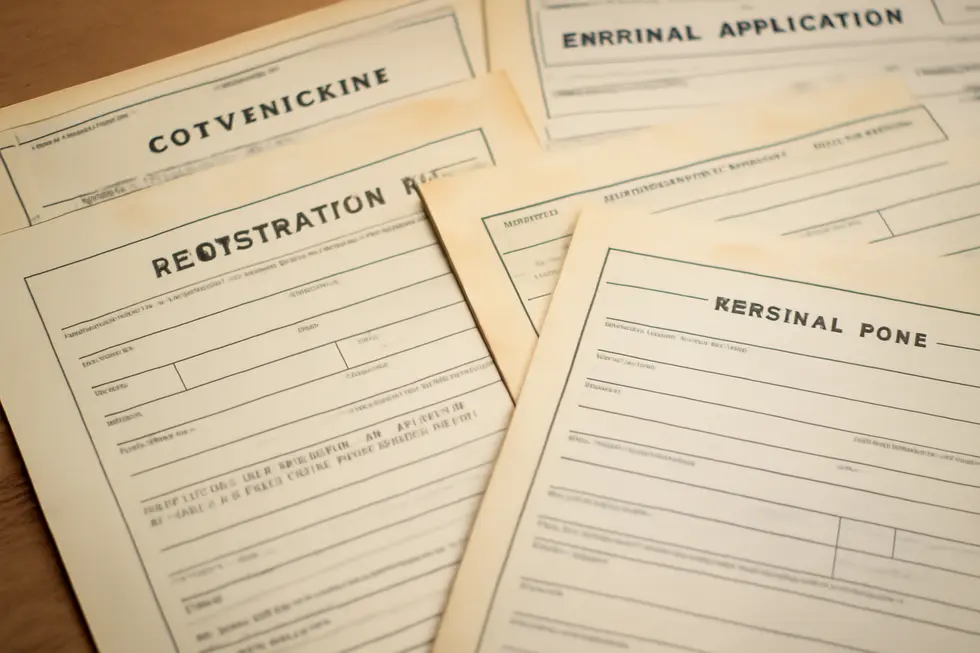
1. How Mandatory Renewal Shaped Copyright Duration and Public Domain Status Prior to 1964
Before 1964, American copyright law functioned under a distinct two-term system that required an active renewal to maintain protection beyond the first 28 years. Copyright holders initially secured a 28-year term upon publication. To extend protection for an additional 28 years, an affirmative renewal registration with the U.S. Copyright Office was mandatory in the 28th year. Failure to renew meant automatic expiration of copyright rights, placing the work immediately into the public domain. This legal and procedural framework critically influenced which works remain under protection or have entered free use today.
This renewal obligation created a filter effect, with many pre-1964 works falling into public domain status due to non-renewal. It demanded vigilance and proactive effort from authors or rights holders; otherwise, their works lost exclusive legal safeguards precisely after the initial term ended. For those that did comply, copyrights lasted up to 56 years—double the initial span.
Researchers and users must consult archival sources such as the Catalog of Copyright Entries and the Stanford Copyright Renewal Database to confirm a work’s renewal status. Without documented renewal, a work’s copyright expired at 28 years, making it available for unrestricted use. The renewal system’s termination that began January 1, 1964, simplified subsequent terms as copyrights automatically extended—no active filing needed—until the comprehensive changes introduced by the 1976 Copyright Act.
This renewal requirement also explains why cultural materials from the early-to-mid twentieth century often exhibit varied copyright statuses today. While many literary and artistic works published before 1964 are now public domain, others remain protected due to timely renewal or later legislative extensions. Notably, different rules applied to sound recordings fixed before 1972, handled separately by more recent laws.
Understanding these formal renewal mandates clarifies the legal landscape for older creative content and highlights the importance of historical copyright records in determining current rights and freedoms.
External resources for verification include the Stanford Copyright Renewal Database.
2. Unlocking the Past: Navigating Renewal Records to Confirm Copyright Status of Pre-1964 Works
Determining whether a work published before 1964 remains under copyright protection hinges critically on verifying if its copyright was renewed. U.S. law mandated an initial 28-year term, after which rights could lapse if renewal was not filed. Thus, understanding and accessing key archival resources is indispensable for anyone seeking to use or license older works without legal risk.
Several databases serve as the foundation for this research. The Catalog of Copyright Entries (CCE), spanning from 1891 to 1978, offers comprehensive registration and renewal records, especially valuable for works published prior to the early 1950s. For titles published from 1950 onward, the Stanford Copyright Renewal Database supplies focused renewal data for Class A works through 1992. Complementing these, the U.S. Copyright Catalog provides records from 1978 to present, helpful for confirming renewals post-1950. Researchers can also access broader verification through direct searches at the U.S. Copyright Office.
This layered approach matters because many published works between 1925 and 1963 never had their copyrights renewed, placing them firmly in the public domain. Without meticulous renewal checks, a work’s status can be mistakenly assumed protected, potentially leading to unnecessary licensing fees or legal challenges. Conversely, works with confirmed renewals maintain protection for significantly longer periods.
Additionally, guides like “Researching Copyright Renewal” by Iris Wildman and Rhonda Carlson offer thorough methodologies to navigate these historical records effectively. This diligence ensures legal clarity when dealing with legacy works and supports informed decisions around usage rights or commercial exploitation.
For more detailed renewal information, the Stanford Copyright Renewal Database remains a highly recommended resource: https://exhibits.stanford.edu/copyrightrenewals
By leveraging these archival tools, one can confidently ascertain the copyright status of pre-1964 works, safeguarding against inadvertent infringement and unlocking access to a wealth of creative content now residing in the public domain.
Chapter 3: Copyright Before the Year 1978: Notice and Registration Obligations
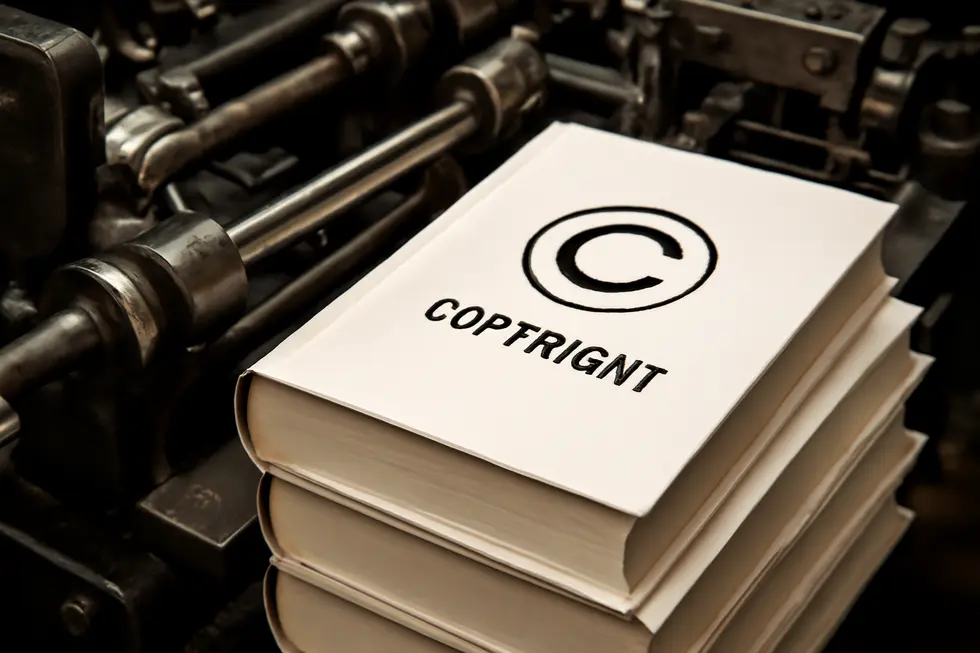
1. The Crucial Role of Copyright Notice in Securing Protection Before 1978
Before the sweeping reforms introduced by the Copyright Act of 1976, which took effect in 1978, copyright protection in the United States hinged heavily on strict formalities. Central among these was the requirement to display a proper copyright notice on published works. This notice typically comprised the © symbol, the year of publication, and the name of the copyright holder. Its presence was not merely procedural—it functioned as an explicit public declaration of ownership and was essential for preserving the validity of copyright protection.
Works published before 1978 without this notice often lost all copyright protection and entered the public domain immediately upon publication. Unlike today’s automatic protections, federal copyright law before 1978 did not extend to unpublished works, and published works had to meet both notice and registration requirements to secure or maintain protection. The copyright notice helped deter infringement by alerting users to the owner’s rights and could also prevent a defendant in an infringement case from claiming innocent infringement, thus influencing potential damages.
This strict reliance on formalities meant that many works from this period lost protection simply due to the absence or improper placement of a copyright notice. Renewals were also key, but without the initial notice, renewal was often impossible, sealing a work’s fate in the public domain. The 1976 Act fundamentally shifted this paradigm by eliminating the compulsory notice requirement. From 1978 onward, copyright protection attached automatically once a work was fixed in a tangible form, granting authors protections regardless of formalities.
Nonetheless, while no longer required, copyright notice and registration remain valuable. They provide legal advantages such as eligibility for statutory damages and attorney’s fees during infringement litigation and serve as clear public evidence of copyright ownership.
Understanding these notice obligations is critical for anyone researching or utilizing works published before 1978. The absence of notice on such works typically signals public domain status, but thorough verification—including checking registration and renewal—may be necessary. More details on these historic requirements can be found in resources like the Indiana University Libraries guide on copyright before 1978.1
2. The Crucial Role of Registration and Renewal in Pre-1978 Copyright Protection
Before 1978, copyright protection in the United States hinged heavily on strict compliance with registration and renewal formalities. Copyrights initially granted a 28-year term, which had to be actively renewed for an additional 67 years to maintain protection, totaling 95 years from publication. Failure to file a timely renewal application resulted in automatic forfeiture, causing the work to enter the public domain. This system meant that many works published between 1930 and 1963 lost protection simply because their owners neglected renewal.
Moreover, formalities such as including a proper copyright notice at publication and registering the work with the U.S. Copyright Office were indispensable requirements. The absence of a copyright notice, or failure to register within defined timeframes, especially for works published before 1978, often led to immediate loss of protection. Such strict formalities contrast with modern practices, where notice is no longer mandatory.
Significantly, the 1992 amendment relieved some of this burden by automatically renewing copyrights for works published from 1964 through 1977. While this relieved creators and inheritors from manually filing renewal claims during this period, filing a renewal remained beneficial. Formal renewal establishes an official public record and supports the ability to seek statutory damages in infringement cases, an important consideration when enforcing rights.
Unpublished works created before 1978 followed a different regime: they lacked federal protection until the 1976 Copyright Act took effect. From January 1, 1978, onward, unpublished works gained automatic protection tied primarily to the author’s life plus 70 years or, in corporate cases, fixed statutory terms.
Additionally, sound recordings fixed before February 15, 1972, are treated separately under the Music Modernization Act, which sets their own terms and exempts them from traditional registration and renewal formalities.
Understanding these requirements illuminates why some older works remain protected while others freely circulate in the public domain, underscoring the importance of monitoring renewal status and copyright notice compliance for works published before 1978. For detailed verification, resources such as the Catalog of Copyright Entries provide comprehensive archival insight.
Chapter 4: Copyright Before the Year 1929: Entry into Public Domain under the Copyright Term Extension Act

1. The Evolution of Copyright Law Before 1929 and Its Lasting Influence on Public Domain Status
Before 1929, U.S. copyright law was primarily shaped by the Copyright Act of 1909, which established a fixed-term system quite different from the life-plus-terms used today. Under the 1909 Act, works received an initial twenty-eight years of protection from the date of publication. This term could be extended by renewal for an additional twenty-eight years, resulting in a maximum possible duration of fifty-six years if all formalities were met.
This system depended heavily on authors or rights holders adhering to strict requirements such as timely registration and renewal filings. Failure to renew in the 28th year resulted in immediate entry into the public domain. As a consequence, many works published before January 1, 1924, are now freely available since their copyrights either expired naturally or were not renewed.
The Copyright Term Extension Act (CTEA) of 1998 substantially altered this landscape by extending the maximum copyright term for eligible pre-1978 works from fifty-six to ninety-five years. It effectively added an extra thirty-nine years of protection for claims renewed under the earlier system. However, this extension only affected copyrights still in force at the time; works with expired or unrenewed copyrights remained in the public domain.
For example, books and films published in 1929 benefited from the CTEA’s extension and thus retained protection for up to ninety-five years. Consequently, these works began entering the public domain on January 1, 2025, when 95 years elapsed from their publication date.
It is important to note that while the 1909 Act set the groundwork for copyright duration, the legislative framework also evolved with further requirements regarding copyright notice and registration, especially for works published before 1978. Sound recordings from this era, governed by separate rules including recent legislation like the Music Modernization Act, followed distinct timelines to public domain entry.
Understanding the copyright status of works before 1929 requires reviewing the renewal records and compliance with the formalities imposed by the 1909 law. Researchers and creators can consult official catalogs and databases to verify these details and determine when a work officially became public domain.
For fuller legal guidance and access to historic registration details, the U.S. Copyright Office records provide comprehensive archives essential in tracing renewal status and copyright term calculations.
2. How Economic Incentives, Technological Limits, and Society Shaped Copyright for Works Before 1929
Before 1929, U.S. copyright law was deeply rooted in the 1909 Copyright Act, which framed copyright protection through formal rules such as publication date, registration, mandatory notice, and renewal. During this period, copyright terms typically lasted an initial 28 years, with an option for renewal of an additional 28 years. This sixty-year span created exclusive economic rights for creators and publishers, encouraging investment in the production and dissemination of literature, music, and film. However, once these terms expired without renewal, works entered the public domain, which allowed unrestricted public use.
The economic landscape before modern copyright extensions was marked by a balance between incentivizing content creation and enabling cultural accessibility. Rights holders enjoyed a limited monopoly, but society benefited sooner from open access to older works. This dynamic shifted with the Sonny Bono Copyright Term Extension Act of 1998, which lengthened protection by 20 years for works still under copyright then but did not revive protection for works published before 1923 that had already entered the public domain. As a result, the public domain remained intact for these older works, allowing educational institutions, scholars, and publishers to freely reuse and disseminate cultural content.
Technologically, the period before widespread digital media relied heavily on physical reproduction—print books, sheet music, and analog films dominated. Copyright law’s emphasis on formalities helped control reproduction and distribution. Once copyrighted works expired, their reuse spurred preservation efforts and renewed public interest, enabling remastering and reprinting projects without legal constraints. The transition into the digital age later broadened access further, but those early public domain entries laid vital groundwork.
Societally, this cycle of protection then release helped nurture cultural heritage. Once copyrights expired, works were available for adaptation, study, and enjoyment without payment or permission, widening educational opportunities and fostering creativity. Term extensions like the 1998 Act temporarily slowed this flow, delaying the enrichment of the public domain until recent years, which have seen a steady return of first published works from 1923 onward entering free use annually.
This nuanced interplay of law, economics, technology, and society underpinned how works published before 1929 transitioned toward public domain status, framing the cultural commons we benefit from today. For more detailed timelines and historical context, the Stanford Copyright Renewal Database is an essential resource.
Chapter 5: Copyright Before the Year 1978: Federal Protection for Unpublished Works
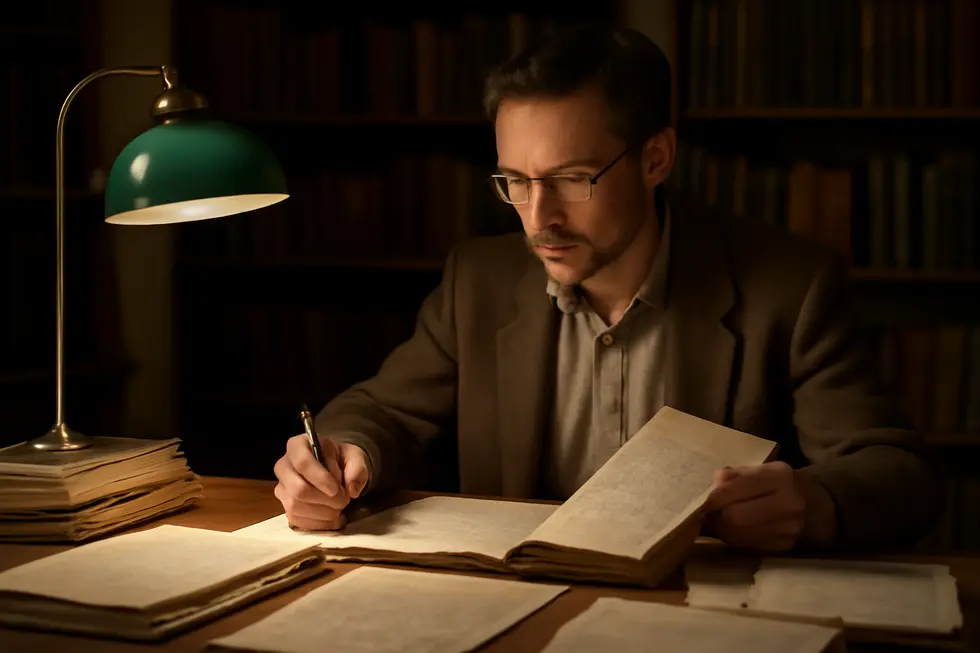
1. Unpublished Works Before 1978: The Transition from Absence to Federal Copyright Coverage
Before 1978, federal copyright protection in the United States was limited exclusively to published works that complied with procedural formalities such as proper copyright notice and registration. Unpublished works, including manuscripts, personal letters, and private recordings, did not enjoy federal copyright protection under the law in place at that time. Instead, these works were safeguarded only by state common law copyright, which varied in scope and duration from state to state and generally lost effectiveness once the work was published.
The passage of the Copyright Act of 1976, effective January 1, 1978, marked a watershed moment for unpublished works. This legislation extended federal copyright protection to all original works of authorship from the moment they are created, regardless of publication status. As a result, unpublished works created prior to 1978—which previously lacked federal safeguards—were granted federal copyright protection retroactively, applying new term limits generally based on the life of the author plus 70 years.
For instance, unpublished works made before 1978 but published after that year have protections lasting either until the end of 2047 or the author’s life plus 70 years, whichever is longer. This change harmonized the treatment of published and unpublished works under federal law, simplifying copyright determination and providing uniform legal protection to a wider range of creative works.
This distinction is critical when assessing the copyright status of older unpublished materials. Prior to the 1976 Act, the lack of formal protections at the federal level means that many unpublished works’ rights were governed by a patchwork of state laws, often making their copyright status difficult to determine. Post-1978 rules have significantly clarified such status, emphasizing the importance of creation date, publication history, and the nature of authorship.
Understanding this evolution is essential for researchers, archivists, and creators dealing with historical unpublished works. For those interested in further details on copyright status and renewal of older works, resources like the Stanford Copyright Renewal Database provide valuable guidance.
2. From Common Law to Federal Protection: The 1976 Copyright Act’s Impact on Unpublished Works
Prior to the implementation of the 1976 Copyright Act on January 1, 1978, unpublished works occupied a unique legal space. Unlike published works, which were governed by federal copyright statutes, unpublished creations were protected exclusively under common law. This common law protection was perpetual but limited in scope, lacking the formal federal recognition that published works enjoyed. Essentially, unpublished works did not benefit from the federal copyright framework, which focused solely on published materials accompanied by proper notice and registration.
The 1976 Act transformed this landscape by introducing federal copyright protection for unpublished works from the moment of their creation. This marked a pivotal shift, effectively harmonizing protection for both published and unpublished works under federal law. Unpublished works created before 1978 and still unpublished at that time were granted protection extending for the life of the author plus 70 years, or until January 1, 2003, whichever was longer. For anonymous, pseudonymous, or works made for hire, the protection extends 120 years from creation.
Furthermore, unpublished works created prior to 1978 but published afterward received tailored terms. If published before 2003, the protection lasts until December 31, 2047, or life plus 70 years, whichever is greater. For works published after 2002, the standard term of the life of the author plus 70 years applies. Meanwhile, published works continued to receive protection under federal law for life plus 70 years or 95 years from publication, depending on the circumstances.
This extension of federal protection unified copyright terms and clarified rights for unpublished works, replacing the formerly fragmented common law approach. It ensured authors and rights holders had consistent, federally enforceable protections, aligning unpublished works with the broader copyright system.
For a deeper understanding of how the 1976 Copyright Act reshaped protection for unpublished works, the U.S. Copyright Office’s guidelines provide authoritative insights.
Chapter 6: Copyright Before the Year: Resources for Research on Historical Copyright Status
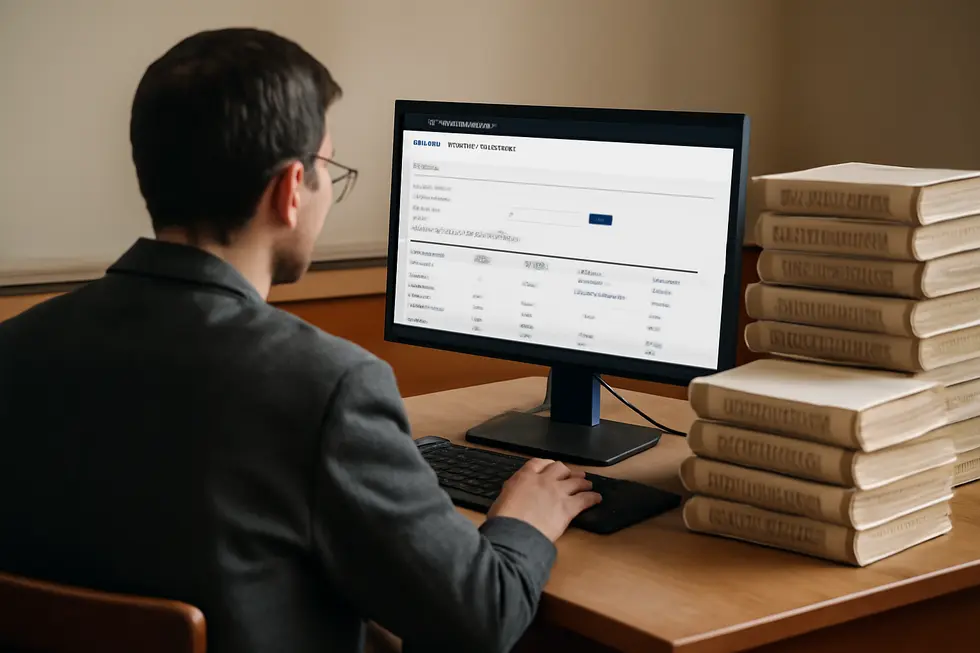
1. Key Archival Sources and Databases for Researching Historical Copyright Status Before 1978
Researching copyright status of works published before 1978 requires navigating a variety of archival materials and specialized databases. The foundational resource for identifying copyright registrations and renewals is the Catalog of Copyright Entries (CCE). Published by the U.S. Copyright Office, the CCE documented original registrations and renewals until the system changed in the late 1970s. All volumes have been digitized and are accessible online, with comprehensive collections curated by institutions such as the University of Pennsylvania Library. This archival record is critical because prior to modernization, a valid registration was often necessary for a work to obtain or maintain protection.
Beyond the general catalogs, several specialized databases support research into specific genres and forms. For musical works, registries maintained by performance rights organizations and agencies provide invaluable data on compositions’ registration and rights holders. For literary and artistic works, tools like the WATCH File directory, co-managed by the Harry Ransom Center and the University of Reading, help identify archival holdings and copyright details.
A particularly important category of archival materials consists of renewal records. For books published between 1923 and 1963, renewal was mandatory for extended protection. Searchable indexes of these renewals allow researchers to determine the current copyright status with greater accuracy. Works failing to renew after the initial term usually entered the public domain.
To verify if specific works are available in the public domain, digital libraries such as HathiTrust and Project Gutenberg provide full-text access to millions of titles, indicating which texts can be freely used. Additional open-access archives offer extensive primary source materials, useful for broader historical context and research beyond copyright specifics.
Understanding legal nuances is also facilitated by tools like the U.S. Copyright Office Fair Use Index, which summarizes key court cases involving the fair use doctrine. This resource aids researchers in assessing permissible uses of protected material.
Together, these archival sources, databases, and verification tools form a comprehensive ecosystem for uncovering the copyright status of older works. For deeper research, the digitized Catalog of Copyright Entries remains an essential starting point.
For more information, the University of Pennsylvania Library’s Catalog of Copyright Entries is available here: https://www.library.upenn.edu/cce
2. Understanding Pre-1978 Copyright Laws and Specialized Rules for Historical Works
The landscape of copyright protection before the modernization of U.S. law in 1978 was shaped by intricate legal frameworks and subject-specific stipulations. Prior to the Copyright Act of 1976, the 1909 Act governed copyright terms, offering an initial 28-year protection period that could be extended by renewal for another 28 years—potentially totaling up to 56 years initially, later extended to a maximum of 95 years through subsequent legislation. Crucially, adherence to formalities, such as correct copyright notice, timely registration, and renewal, was essential. Failure to renew or omission of proper notice often caused works to immediately enter the public domain. This created a patchwork of copyright status for older works, where two identical publications could have radically different protections depending on compliance.
Beyond formalities, specific categories of works were treated differently. For example, U.S. federal government documents and court rulings have not been copyrightable since the 1976 Act, with some exceptions going back even further, such as the 1888 Supreme Court decision establishing state court rulings’ status. In the United Kingdom, government-produced maps fall under Crown Copyright, governed by distinct rules from those applied to creative literary or artistic works. Such subject-specific layers add complexity to determining legal status, particularly when crossing jurisdictional boundaries.
For researchers, the specialized resources available are indispensable. The U.S. Copyright Office’s Catalogs of Copyright Entries serve as foundational archives listing initial registrations and renewals, while the Fair Use Index tracks important judicial interpretations stretching back into the nineteenth century. Moreover, institutional legal research guides provide curated insights tailored to general copyright law as well as specialized topics like art or emerging fields such as AI-generated content. These resources collectively illuminate the nuanced history of copyright protection and help establish whether older works remain safeguarded or have passed into the public domain.
Understanding these historical legal frameworks and subject-specific rules is vital when investigating materials published before 1978. Scholars and creators navigating this terrain benefit greatly from consulting specialized archives and guides, such as the Indiana University Libraries’ public domain research guide, to clarify complex circumstances involving copyright formation, notice requirements, or renewal status.
Final thoughts
Understanding copyright laws before 1978 is a crucial advantage for business owners aiming to harness creative content while safeguarding their valuable assets. Knowing when works enter the public domain, the significance of renewal and notice requirements, and how unpublished works are protected clarifies rights and limitations surrounding legacy materials. By leveraging research tools and applying historical copyright insights, businesses can confidently utilize older works and minimize infringement risks. Ultimately, mastering these intricacies fosters innovation, protects intellectual property, and supports sustainable growth in a rapidly evolving creative landscape.
Your IP is the foundation of your success – let’s protect it together before it’s too late. We can’t wait to help you turn your ideas into legally secured assets.
About us
undefined
